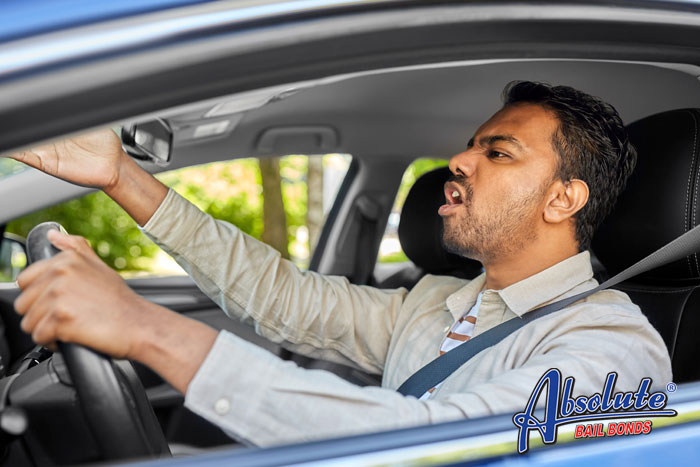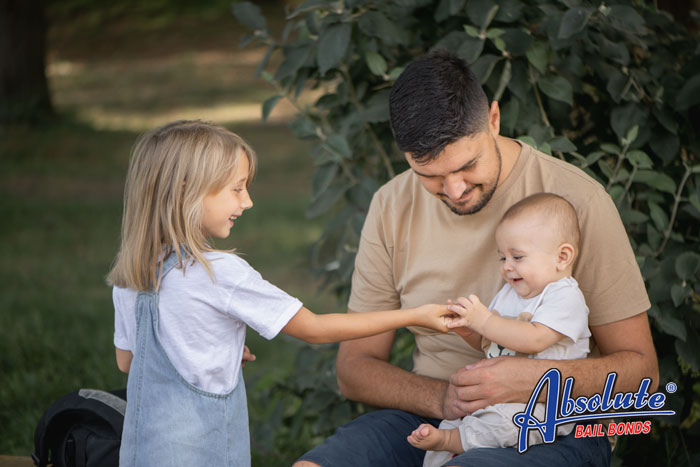
Stay Safe During Wildfire Season
No matter what part of the state you live in, you should know how to take care of yourself if a wildfire is in your area.
Have an evacuation plan in mind. Wildfires move fast and can change suddenly. Don’t wait until you receive evacuation orders to get things in order. As soon as you know that there is even the slightest chance that a wildfire could pass near you, create an evacuation plan. This plan should map out the best way to leave your neighborhood, already having overnight bags stowed in your vehicle, filling up the car’s gas tank, and having everything needed to move pets at the ready.
Rather than calling the fire department every few minutes, listen to reports on the radio/news program as they come in. When there’s a wildfire in your area, you should always pay attention to official reports. These reports will let you know if there’s a chance that wildfire will come closer and even more importantly, let you know if you need to immediately evacuate.
Charge your phones and make sure you have plenty of working batteries on hand. There is a good chance the power will be turned off so you’ll want to be prepared in advance.
Once you have your own situation in order, connect with family, friends, and neighbors and find out how they are doing. An approaching wildfire is one of those times when everyone needs to pull together and lend a helping hand. Make sure everyone has the ability to evacuate and enough supplies to get them through if they have to stay home while the power is out. If they don’t try to help them find what they need. Offering just a little assistance during this time is the best way to make sure everyone survives.
Once everything is taken care of in your community, reach out to relatives and friends who live in another area. The odds are good that they already know about the wildfire and are concerned about your welfare. Touching base, even if it’s only through a social media post will give them some peace of mind.
Stay safe this wildfire season!

Jaywalking in California
All of us have heard the term jaywalking, but few of us can say exactly what it is. According to the Legal Dictionary, the exact definition of jaywalking is the act of crossing a roadway when it is unlawful to do so. This includes crossing between intersections, as well as crossing at a crosswalk equipped with a signal, without waiting for the proper indication that it is safe to do so.
While jaywalking might not seem like a big deal, you should know that it’s prohibited in California. You can learn more about jaywalking in California by checking out 21955 VC, which makes it very clear that jaywalking is illegal in the state.
The law states that you’re not allowed to walk, “between adjacent intersections controlled by traffic control signal devices or by police officers, pedestrians shall not cross the roadway at any place except in a crosswalk.”
Even though jaywalking is illegal, the good news is that it’s an infraction, not a misdemeanor or felony. Not only won’t it go on a permanent criminal record that can negatively impact your ability to find housing or secure a job, but it also means you don’t have to worry about going to jail. The jaywalking incident will be no worse than getting pulled over for a minor driving mistake.
The bad news is that there are some substantial fines connected to jaywalking in California. Right off the bat, your jaywalking ticket will cost you $196 but there will also be administrative fees, processing fees, and other charges added to the ticket until it’s a substantial amount.
It is also worth noting that if you’re caught jaywalking, the police officer who witnessed the incident will ruin your record. If you have any bench warrants, they’ll have no choice but to arrest you.
The big concern everyone has regarding jaywalking is that someone could get hurt. If you’re decision to jaywalk results in an accident, you’ll likely have to defend yourself in a civil case.

Consequences of Reckless Burning in California
Finally, it’s summertime! Between the increased daylight hours and warmer weather, you’re finally able to do all of your favorite outdoor activities, including having your friends over for a bonfire.
Before you strike a match, you need to make sure you’ve taken the proper steps so that you don’t find yourself dealing with a reckless burning charge.
California’s Penal Code 452 PC exists exclusively for people who either start an illegal fire or who are reckless with fire. The law prohibits you from randomly setting fire to:
- Structures
- Property
- Forest land
The way the law is written, even if you don’t deliberately set fire to something, but simply have a campfire, you can still be charged with being reckless with fire if you fail to follow basic protocols and the fire gets out of control.
Penal Code 452 PC states:
“A person is guilty of unlawfully causing a fire when he recklessly sets fire to or burns or causes to be burned, any structure, forest land or property.
(a) Unlawfully causing a fire that causes great bodily injury is a felony punishable by imprisonment in the state prison for two, four, or six years, or by imprisonment in the county jail for not more than one year, or by a fine, or by both such imprisonment and fine.
(b) Unlawfully causing a fire that causes an inhabited structure or inhabited property to burn is a felony punishable by imprisonment in the state prison for two, three, or four years, or by imprisonment in the county jail for not more than one year, or by a fine, or by both such imprisonment and fine.
(c) Unlawfully causing a fire of a structure or forest land is a felony punishable by imprisonment in the state prison for 16 months, two or three years, or by imprisonment in the county jail for not more than six months, or by a fine, or by both such imprisonment and fine.
(d) Unlawfully causing a fire of property is a misdemeanor. For purposes of this paragraph, unlawfully causing a fire of property does not include one burning or causing to be burned his own personal property unless there is injury to another person or to another person’s structure, forest land or property.
(e) In the case of any person convicted of violating this section while confined in a state prison, prison road camp, prison forestry camp, or other prison camp or prison farm, or while confined in a county jail while serving a term of imprisonment for a felony or misdemeanor conviction, any sentence imposed shall be consecutive to the sentence for which the person was then confined.”
If you’re charged with basic reckless burning of personal property, you’re dealing with a misdemeanor crime. The maximum sentence is 6 months in a county jail and/or a $1,000 fine.
The situation goes from bad to worse if a building or forestland was impacted by your fire. When buildings and forest land are involved, reckless burning in California becomes a wobbler offense. At this point, it’s often referred to as reckless arson.
When you create a forest fire and are only charged with a misdemeanor, the maximum sentence you face is six months in a county jail and/or a $1,000 fine. However if the fire involved an inhabited structure or property, you face a felony charge which carries a sentence of 2, 3, or four years in a state prison.
If someone was injured as a result of your fire, the sentence can include up to six years in a state prison.
If you have any intention of lighting any type of fire this year, it’s in your best interest to be safety conscious and to have all of your safety equipment/tools on hand before you start burning.

Early Warning Signs of Heat Stroke
The longer, warmer days inspire all of us to spend more time outdoors. The problem is that the hotter it gets, the greater the risk of heatstroke.
The problem many people discover is that while there are warning signs that they’re starting to overheat, most either ignore these signs or fail to recognize them for what they are until it’s too late. Make this the year that you sit down and familiarize yourself with the early warning signs of heatstroke. You’ll find that knowing when you’re overheating improves your overall health and how much you enjoy the summer months.
Headaches are often the first sign that you’ve been out in the sun and heat too long. They can also be a sign of dehydration so going indoors and drinking a tall glass of cold water as soon as your head starts to throb can solve both issues before they become serious health concerns.
Keeping a mirror tucked into your pocket while you’re outside isn’t a bad idea. You can use it to keep an eye on your complexion. If you notice you’re becoming flushed, you should either get inside or at least to a nice shady patch so you can cool down a bit.
If your skin feels hot, tight, and dry, you immediately need to take steps to cool down. The fact that you feel hot but aren’t sweating isn’t a good sign. The longer you ignore the state of your skin, the greater the risk of you developing full-blown heat stroke.
Do you feel your pulse pounding in your throat or your heart hammering in your chest? This is often a sign that you’ve developed heatstroke. You need to immediately get out of the sun and start slowly cooling yourself down. If your heart rate doesn’t start to slow down after a few minutes, you’ll want to seek medical assistance.
The hotter you get, the more confused you’ll feel. Things like agitation, sudden irritation, delirium, and slurred speech are signs of advancing heat stroke. Seek medical attention.
Stay cool and healthy this summer!

Avoiding Road Rage in California
Road rage is a serious problem and it doesn’t show signs of getting better. According to the American Automobile Association, approximately 200 murders and 12,000 deaths over seven years were linked to road rage incidents. The NHTSA reported that 66% of traffic fatalities were the direct result of aggressive driving and road rage. The Zebra conducted a study in 2019 that revealed that 82% of drivers committed an act of road rage.
While you may not be able to avoid road rage altogether, there are some things you can do to reduce the number of road rage incidents you’re linked to.
Avoid driving when you’re already on edge.
The more irritated you are when you slide behind the wheel, the greater the odds are that you’ll experience road rage during your commute. Try to calm yourself down before driving. Once you’re on the road, take deep breaths and listen to soothing music or an uplifting podcast.
Give yourself plenty of time to reach your destination. The tighter you are on time, the more recklessly you’ll drive and the more irritated you’ll be at other drivers. Giving yourself a good amount of time to safely reach your destination is one of the best ways to avoid road rage incidents.
Carefully choose your route before you leave. If you know you’re already irritated, choose a route that has the least amount of traffic on it. The fewer cars you encounter on your drive, the more relaxed you’ll be.
Let things go while you’re driving. There will be days when things happen that irritate you. Rather than letting them get under your skin and prompt you into doing something you’ll regret. Take lots of deep breaths, practice defensive driving techniques, and focus on all the good things that are happening around you.
When you encounter an angry driver, don’t engage with them. Stay defensive and let them go ahead of you. Don’t match their aggressive behavior with aggressive moves of your own.

Providing False Credit Card Information
There are times when we could all use a little extra money. Adding an additional line of credit to our lives seems like a good way to get it. The problem is that if you’re already overstretched, the credit card companies will likely reject your application. This can prompt some of us to consider providing false credit card information.
Before you start to provide someone with false credit card information you should know about Penal Code 484f PC. This is the law that outlines the consequences of providing false credit card information in California.
The law states: “(a) Every person who, with the intent to defraud, designs, makes, alters, or embosses a counterfeit access card or utters or otherwise attempts to use a counterfeit access card is guilty of forgery.
(b) A person other than the cardholder or a person authorized by him or her who, with the intent to defraud, signs the name of another or of a fictitious person to an access card, sales slip, sales draft, or instrument for the payment of money which evidences an access card transaction, is guilty of forgery.”
If you think providing false credit card information is something that only happens when people lie on credit card applications, you’re wrong. While there are lots of people who do lie when they apply for credit cards, there are many different ways a person can violate the law.
Examples of providing false credit card information include:
- Creating fake debit/credit cards
- Using a friend/family member’s credit card without first getting their permission
- Providing a store with a fake credit card number
- Doing something to alter the numbers on a credit/debit card
Providing false credit card information is a wobbler offense. The circumstances surrounding the incident and the amount of money involved are used to determine if you’ll be charged with a misdemeanor or a felony. If you’re convicted of misdemeanor falsifying credit card information, the maximum sentence is one year in jail and restitution. In felony cases, the maximum sentence is three years in prison.
In most cases, providing false credit card information is just one of the charges you’ll have hanging over your head. Additional charges usually connected to this type of crime usually include forgery, petty theft, stealing a credit card, etc.

Failing to Pay Child Support in California
Child support is always a touchy subject. Often a person’s actual financial situation isn’t taken into consideration when the amount of child support is set. There is also the constant complaint that the child support isn’t going to the child, but rather being used for other purposes. The arguments over child support are often intense and in the end, the parties on either side are unhappy with the result.
It doesn’t matter how unhappy you are about having to pay child support, it’s something you want to stay on top of because failing to do so can result in numerous legal headaches.
It doesn’t matter what you might have on your plate, paying your court-ordered child support should be your first priority. Failing to make the payments on time and in full doesn’t just ruin your credit report, it’s breaking the law. No matter what type of financial hardships you encounter, you need to stay on top of those payments. As soon as you realize that you’re going to have a problem, contact the court so something else can be arranged, but don’t miss a payment while you wait for your hearing with the family judge.
Failing to pay your child support in California has severe legal consequences. In most cases, the state decides to suspend your driver’s license until the payments are caught up. This means that you can’t legally drive. If you’re caught driving without a valid license, you’ll be charged with a misdemeanor, get hit with more fines, and potentially be arrested. The state could also create a levy on your bank account, meaning that they will simply withdraw the amount of the outstanding child support payments. They could also cancel your passport.
In extreme cases, people who fail to pay child support in California are arrested. This usually happens when there is a long history of missed child support payments. Failure to pay child support can result in a one-year jail sentence and a $2,000 fine.
Considering the severe consequences of being late with a child support payment, it’s in your best interest to notify the court as soon as you realize you’re in a financial bind.

Do I Have to Report a Traffic Accident?
Most of us have a weird, knee-jerk reaction to traffic accidents. We like to pretend we don’t know about them and try to put as much distance between ourselves and the traffic accident as we possibly can. This is our reaction whether we’re involved in the accident or if we’ve simply witnessed one.
When a traffic accident occurs, many of us wonder if we actually have to report it to the police.
If you’re driving any of the vehicles involved in a car accident, you are legally required to report the accident to the police.
Technically, you have 24 hours to complete a written report about the incident. All things considered, it’s in your best interest to report the accident as soon as it happens. There are several reasons for this:
- The responding officer will handle writing the written report for you
- Filing the insurance claim will be easier
- The events leading up to the cause of the accident is fresh in everyone’s mind
- You won’t have to worry about being labeled a hit and run driver
In addition to letting the police know about the accident, you need to let your car insurance company know about the accident as quickly as possible. Not only will this put you in a position to receive your claim money as quickly as possible, but if an investigation is needed, they will be able to talk to everyone involved while the details of the accident remain fresh in everyone’s mind.
But what if you merely witnessed a car accident but weren’t directly involved with it?
It’s in your best interest to make sure that everyone who was involved in the accident doesn’t need any type of medical attention and you should also plan on serving as a witness to the incident.

The Unlawful Taking of Pictures and Video Recording
Thanks to built-in cameras on smartphones, most of us have a camera at our disposal 24/7. We’re able to record everything. We use the phone camera for selfies, points of interest, and to record the actions of others. We’ve grown so accustomed to taking photos and videos of everything that we rarely stop and think about the fact that there are certain times, places, and situations when taking pictures and video recordings is actually against the law.
Learning that there are cases where a person has broken the law with videos or photos they’ve snapped can make you have second thoughts about using your camera. The good news is that the odds are pretty good that you’re not going to record anything that will break the law. Both federal and state laws are written in a manner that allows you to legally take a photo of anything that’s plainly visible. You’ll be pleased to learn that this includes federal buildings and even police officers who are working.
You’re also legally allowed to take photos and videos of things that can be seen from public property. For example, as long as you can do so from the road, you’re allowed to photograph an interesting-looking barn.
If you’re on private property, the property owners get to make rules about what you can and can’t take photos/videos of. For example, if snapping a few shots of the barn requires you to walk across a private hayfield and jumping a fence, the property owners could insist that you destroy the images and also file trespassing charges against you. The same is true if you walk up to someone’s house and start snapping pictures or videos through their windows. You’re not legally allowed to take photos or videos of a person (or their belongings) if the property owner had a reasonable expectation of privacy.
If you’re caught taking photos or videos in an area where the property owner had a reasonable expectation of privacy, they can file invasion of privacy charges as well as trespassing charges against you. If you’re convicted of invasion of privacy, the judge could sentence you to up to six months in a county jail and order you to pay a fine of $1,000. If this isn’t the first time you’ve been convicted of invasion of privacy, the sentence could double.
The best way to avoid getting into trouble while you shooting pictures or videos is to make sure you’re feet are always firmly planted on public property.

Probation and Parole. What’s the Difference?
If you’re confused about the difference between probation and parole, you’re not alone. Most people don’t really know what the difference is between the two until they get into trouble with the law.
While you’re on probation, you’re still technically in police custody, but you have a great deal more freedom than you’d enjoy if you were in jail. There will be some rules attached to your probation, breaking any of these rules will result in you losing your probation status and being locked in a cell. One of the big things you’ll have to do is routinely meet with your probation officer who will insist that you prove you’re following the rules.
Many people are put on probation without ever seeing the inside of a jail cell.
Parole is both similar to probation and different. The best way to think about parole is that it is kind of like is a kind of parental supervision. It’s sort of like that stage where sorta living on your own but still relying on your parents. When you’re granted parole, the parole board is saying that while you no longer have to be in jail, you’re also not ready for total independence.
Legally speaking, parole is a conditional release from prison. It is a way of getting out of prison even though you still have some time left to serve. Other than the fact that you have spent time in prison, parole and probation are very similar. Though the rules of parole are sometimes stricter and you sometimes have to work harder to prove that you should be granted parole. One of the big issues connected to parole is admitting your guilt and showing that you understand why your actions were wrong.
It isn’t unusual for restrictions and requirements to be attached to both parole and probation, though those restrictions vary from one case to the next. In most cases, people who are serving both parole and probation will have their travel restricted, will have to submit to drug (and sometimes alcohol) testing, are sometimes required to attend counseling sessions, are sometimes required to be at home during specific times of the day/night, and will sometimes be electronically monitored.
If you are serving either probation or parole, it’s important to remember that you haven’t been given a get out of jail free card. A single misstep, even a little one, could result in your being incarcerated.

